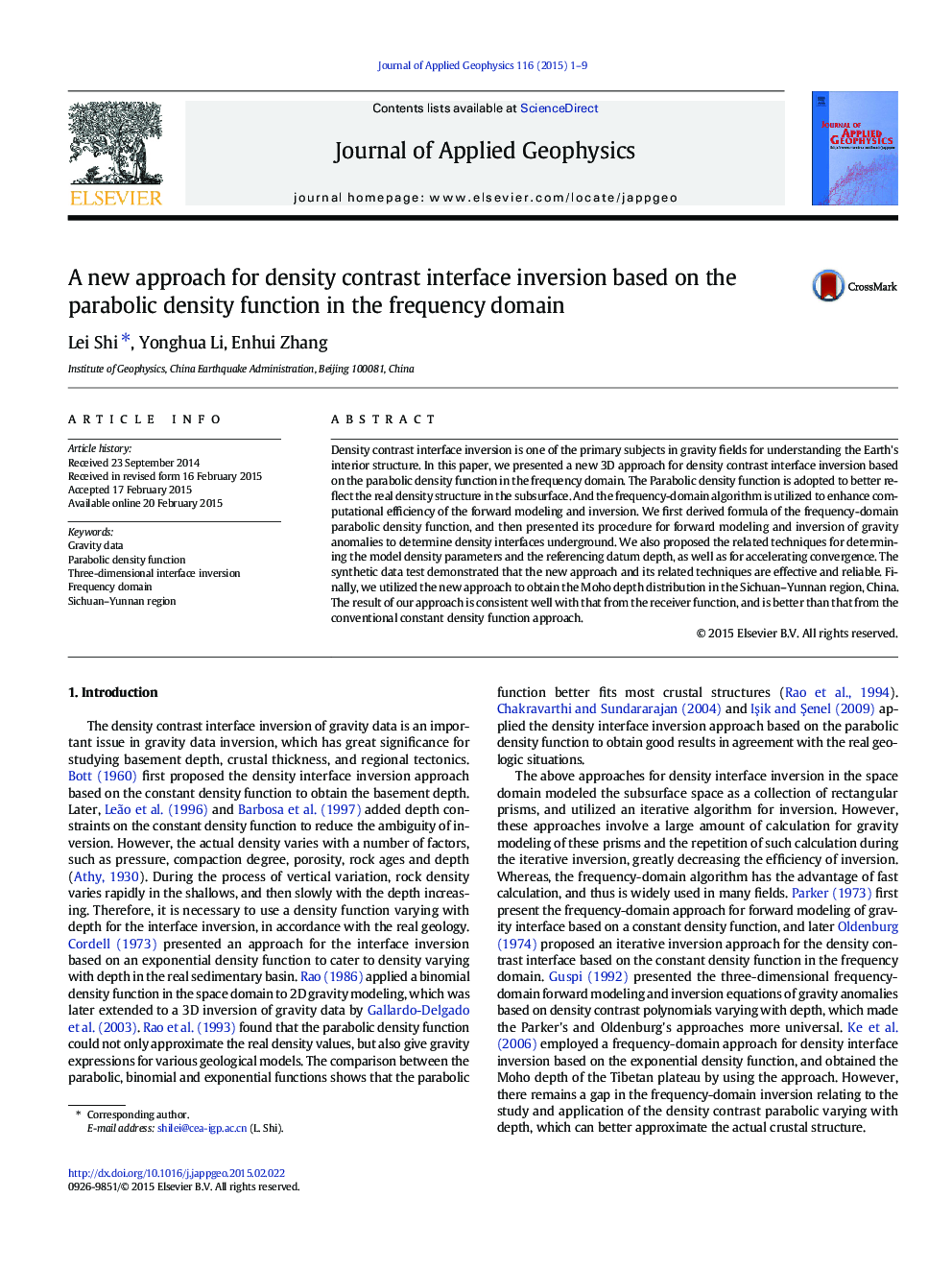| کد مقاله | کد نشریه | سال انتشار | مقاله انگلیسی | نسخه تمام متن |
|---|---|---|---|---|
| 4739949 | 1641135 | 2015 | 9 صفحه PDF | دانلود رایگان |
• A new approach for three-dimensional density interface inversion is presented.
• It makes use of the parabolic density function and the frequency-domain algorithm.
• It has advantages of fast calculation and meeting the real density structures.
• Tests on synthetic and real data show that the method is rapid and effective.
Density contrast interface inversion is one of the primary subjects in gravity fields for understanding the Earth's interior structure. In this paper, we presented a new 3D approach for density contrast interface inversion based on the parabolic density function in the frequency domain. The Parabolic density function is adopted to better reflect the real density structure in the subsurface. And the frequency-domain algorithm is utilized to enhance computational efficiency of the forward modeling and inversion. We first derived formula of the frequency-domain parabolic density function, and then presented its procedure for forward modeling and inversion of gravity anomalies to determine density interfaces underground. We also proposed the related techniques for determining the model density parameters and the referencing datum depth, as well as for accelerating convergence. The synthetic data test demonstrated that the new approach and its related techniques are effective and reliable. Finally, we utilized the new approach to obtain the Moho depth distribution in the Sichuan–Yunnan region, China. The result of our approach is consistent well with that from the receiver function, and is better than that from the conventional constant density function approach.
Journal: Journal of Applied Geophysics - Volume 116, May 2015, Pages 1–9
